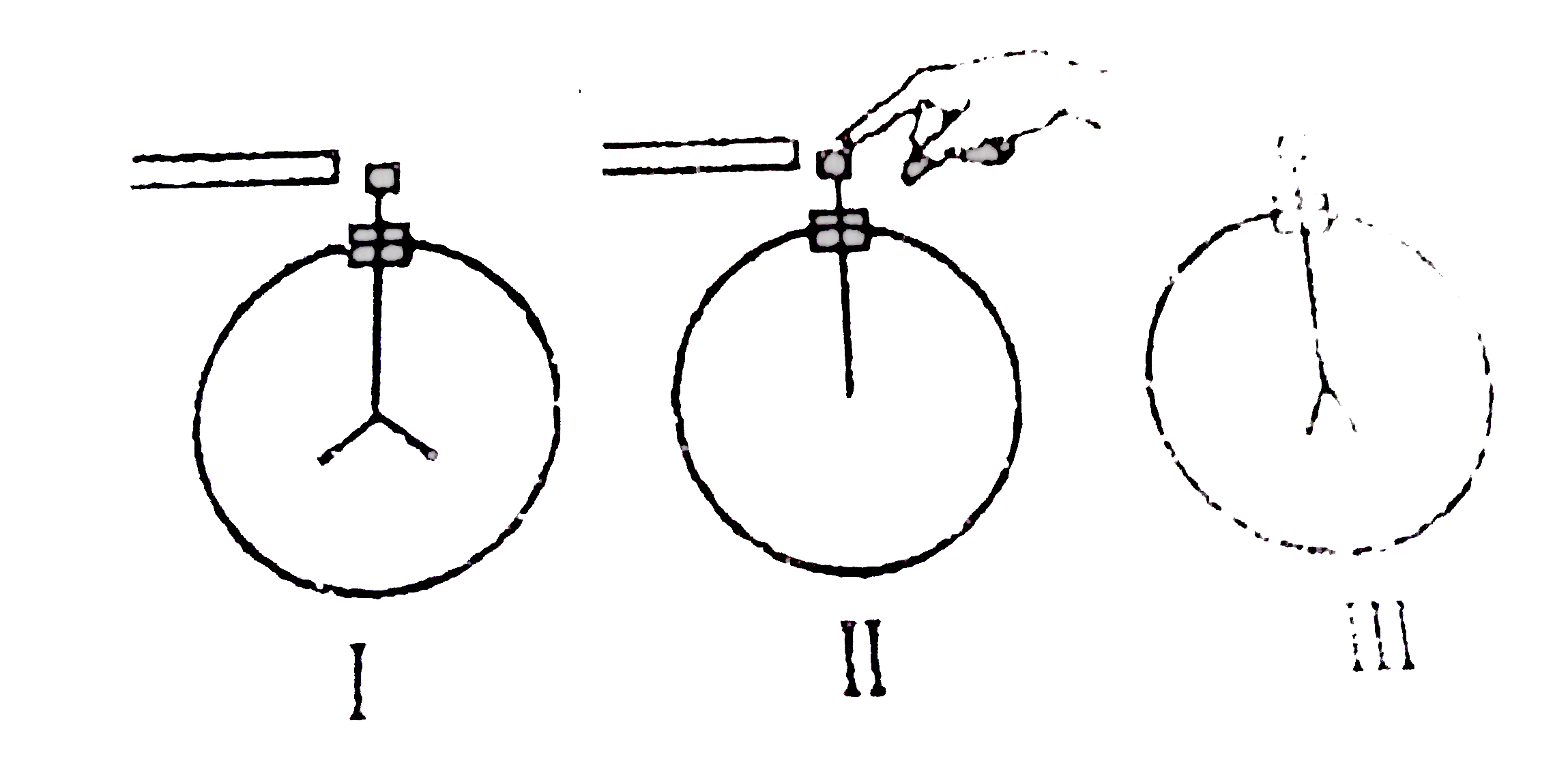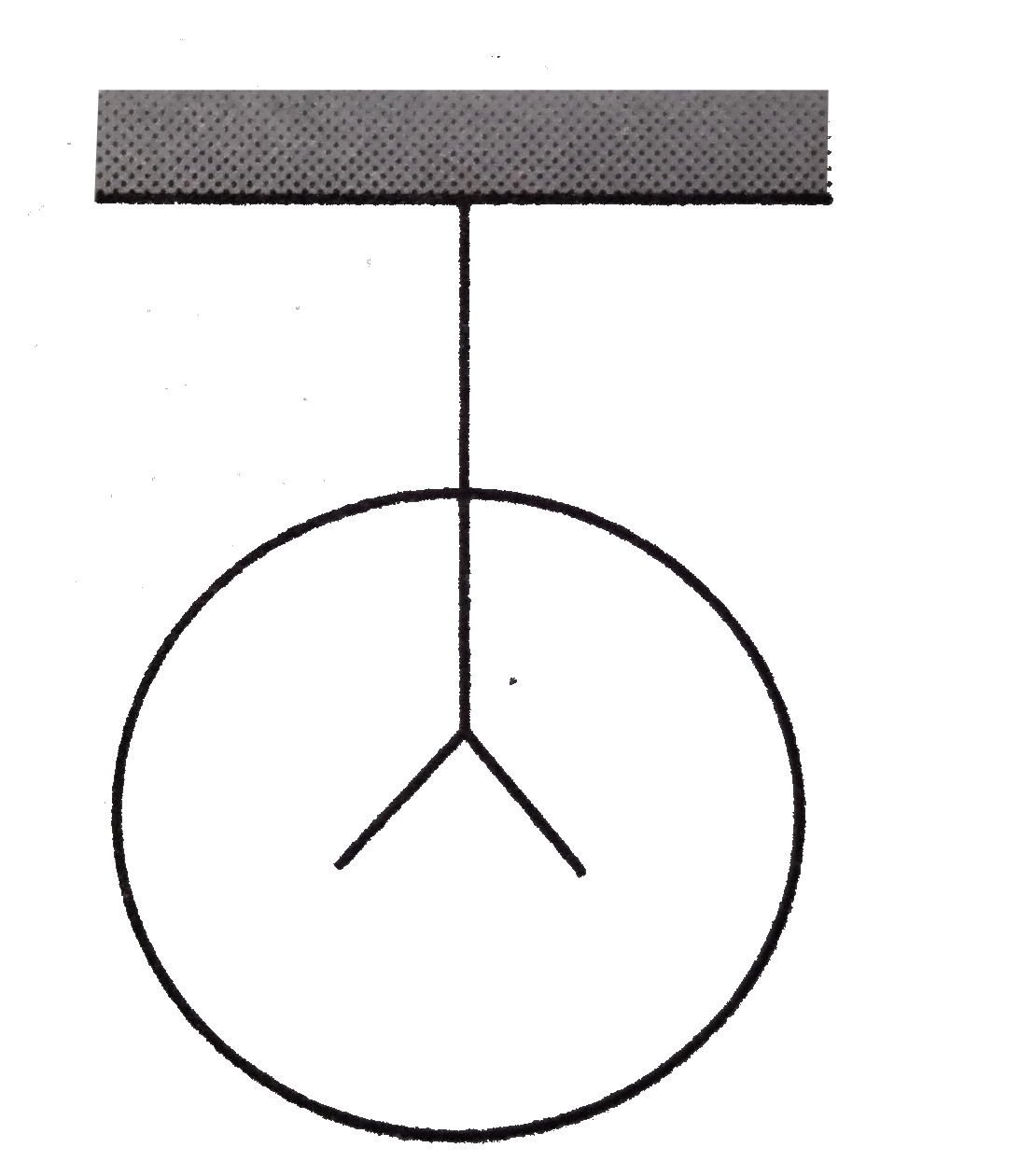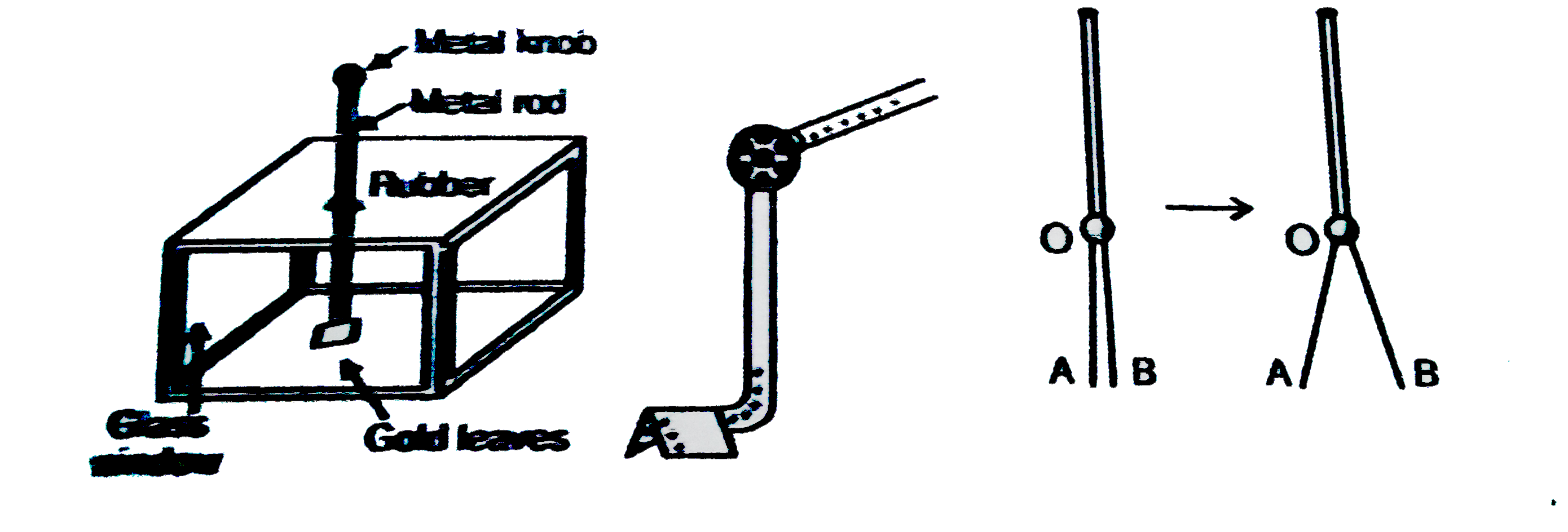When a negative charged rod is brought near, but does not touch, the initially unchanged electroscope shown below, the leaves spring apart (I). When the electroscope is then touched with a finger, the leaves collapse (II). When next the finger and finally the rod are removed, the leaves spring apart a second time (III). The charge on the leaves is

positive in both I and III
negative in both I and III
positive in I, negative in III
negative in I, positive in III
The correct Answer is:D
Due to induced effect.
Topper's Solved these Questions
- MISCELLANEOUSBOOK - ALLENCHAPTER - MISCELLANEOUSEXERCISE - Exersice-03
7 Videos
- MISCELLANEOUSBOOK - ALLENCHAPTER - MISCELLANEOUSEXERCISE - ASSERTION-REASON
18 Videos
- MISCELLANEOUSBOOK - ALLENCHAPTER - MISCELLANEOUSEXERCISE - Part -II Example Some worked out Examples
1 Videos
- KINEMATICS (MOTION ALONG A STRAIGHT LINE AND MOTION IN A PLANE)BOOK - ALLENCHAPTER - KINEMATICS (MOTION ALONG A STRAIGHT LINE AND MOTION IN A PLANE)EXERCISE - BEGINNER S BOX-7
8 Videos
- PHYSICAL WORLD, UNITS AND DIMENSIONS & ERRORS IN MEASUREMENT BOOK - ALLENCHAPTER - PHYSICAL WORLD, UNITS AND DIMENSIONS & ERRORS IN MEASUREMENT EXERCISE - EXERCISE-IV
8 Videos
Similar Questions
A positively charged body is brought near to bob of an uncharged gold leaf electroscope , then :
View SolutionWhat will happen to the leaves of an electroscope if a positively charged body is brought near
(a) An uncharged electroscope ?
(b) A positively charged electroscope ?
( c ) A negatively charged electroscope ?
View Solution
Knowledge Check
When a plastic rod rubbed with wool is brought near the knob of a negatively charged gold leaf electroscope, the gold leaves
AContractBDilateCStart oscillatingDCollapse completelyWhen a glass rod rubbed with silk is brough near the knob of a positively charged gold leaf electroscope , the gold leaves
ACompletely collapseBMove closerCMove apartDAre unaffectedWhen the leaves of a Mimosa pudica plant are touched with a finger, they fold up quickly. This is an example of:
AchemotropismBthigmonastyCphotonastyDthigmotropism
Akshay and Sauranh are the students of class IX. They have recently studied the chapter on structure of atom in the class. Both Akshy and Saurabh were performing some activities in the science laboratory. Akshy took a plastic comb and rubbed it in his dry hair. When he brought this plastic comb (rubbed in dry hair) near tiny pieces of paper, the comb attracted the pieces of paper towards it. Mean while, Saurabh took a glass rod and rubbed it with a piece of silk cloth. When he brought this glass rod (rubbed with silk cloth) near the tiny pieces of paper, the glass rod also attracted the pieces of paper towards it (just like the plastic comb). Akshy and Saurabh had studied an instrument called electroscope in class VIII. So, they decided to make use of a positively charged electroscope having diverged leaves (or opened up leaves) in their activity. Akshy took the plastic comb (rubbed in dry hair) and touched the metal top of positively charged electroscope with it. This made the diverged leaves of electroscope to fold up. Saurabh then tool the glass rod (rubbed with silk cloth) and touched the metal top of another positively charged electroscope with it. This made the diverged leaves of the electroscope to diverge (or open up) even more. Askshy did not understand the various conclusions which could be drawn from all these observations. Saurabh explained him everthing very clearly.
(a) What conclusion can be drawn from the observation that a plastic comb rubbed in dry hair and a glass rod rubbed with silk cloth, both attract tiny pieces of paper ?
(b) What do the above observations tell us about the atoms present on plastic comb and glass rod ?
(c) (i) What conclusion do you get from the observation that when a plastic comb rubbed in dry hair is touched with the metal top of a positively charged electroscope, then its diverged leaves fold up ?
(ii) What conclusion do you get form the observation that when a glass rod rubbed with silk cloth is touched with the metal top of a positvely charged electrosope, then its leaves diverage even more ?
(d) What are the two types of electric charges present in atoms as shown by the above observations ? Name the subatomic particles which carry these charges.
(e) (i) Which electric charges are agained by a plastic comb on rubbing in dry hair ?
(ii) Which electric charge are lost by a glass rod on rubbing with silk cloth ?
(f) What values are displayed by Saurabh in this episode ?
View SolutionWhy do the two leaves present in an electro scope always move apart when a charged body is brought near the brass rod connected to them?
View SolutionAn electroscope is given a positive charge, causing its foil leaves to separate. When an object is brought near the top plate of electroscope, the foils separate even further. We conclude

View SolutionAn electroscope is given a positive charge, causing its foil leaves to separate. When an object is brought near the top plate of the electroscope, the fiols separated even further. We conclude.

View SolutionA leaf electroscope is a simple apparatus to detect any charge on a body. It consists of two metal leaves OA and OB, free to rotate about O. Initially both are very slightly separated. When a charged object is touched to the metal knob at the top of the conducting rod, charge flows knob to the leaves through the conducting rod. As the leaves are now charges similarly, they start repelling each other and get separated, (deflected by certain angle).

The angle of deflection in static equilibrium is an indicator of the amount of charge on the charged body.
In an electroscope, both leaves are hinged at the top point O. Each leaf has mass m, length l and gets charge q. assuming the charge to be concentrated at ends A and B only, the small angle of deviation (θ) between the leaves in static equilibrium, is equal to :
View Solution
